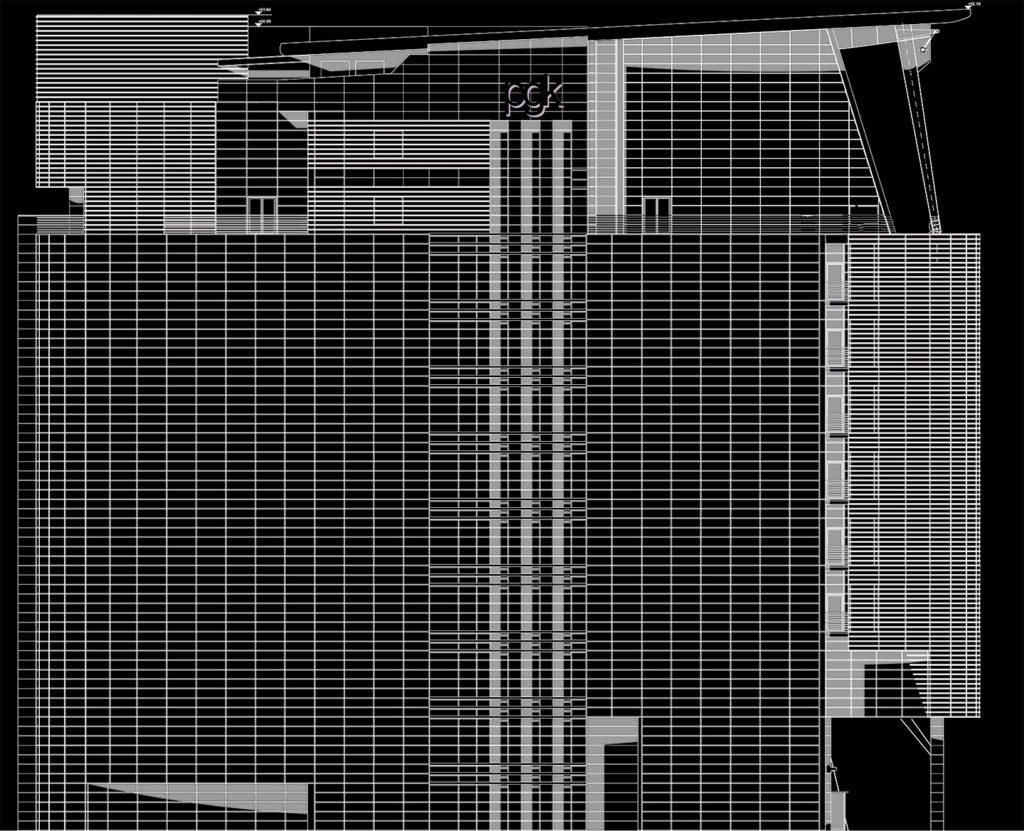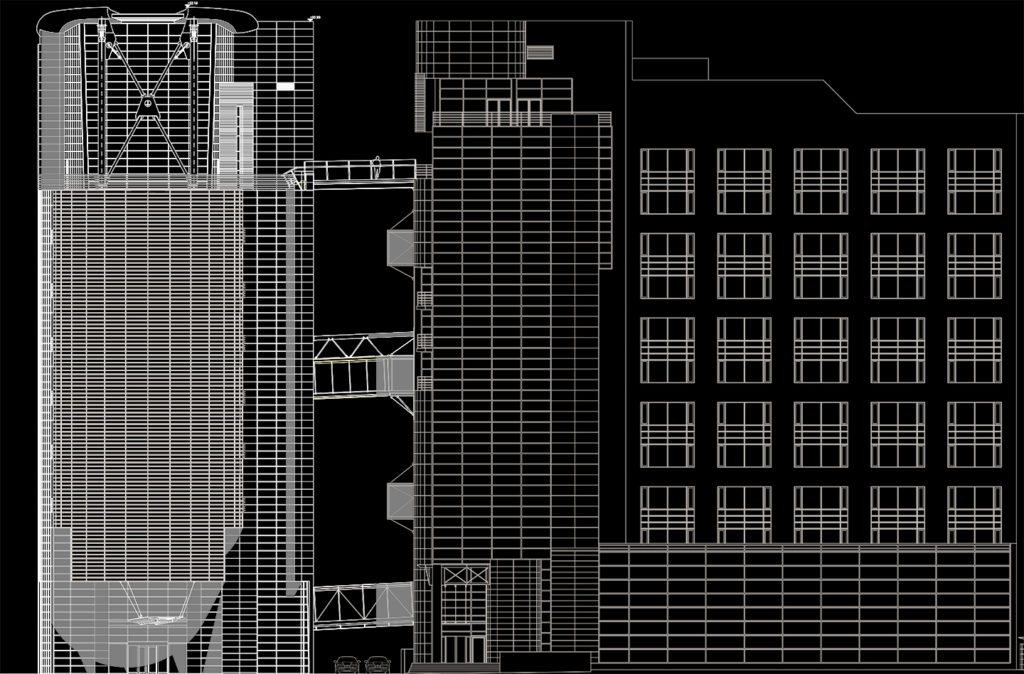This investment is located over two sites, which until 2011 were occupied by historic structures. The deteriorating state of one of them led to its partial collapse, and in consequence, both buildings needed to be demolished. The one occupying a corner position was widely know as the ‘Poznan Iron’, due to its distinctive shape. As the building still featured prominently in the collective memory, it was decided that this part of the investment would be realised in its historic form. The project respects the style, the elevation partitions and the overall dimensions of the former building. Even the turret, which was destroyed during the Second World War, was rebuilt. The second part of the development, on Krysiewicza Street, was imbued with a modern and contemporary spirit. The use of common colouristics bonds both parts together, and with the use of modern technologies on one side and traditional craft on the other, a construction of high quality and rich architectural detail was achieved
LINKS:
- https://wtkplay.pl/video-id-35001-zelazko_bedzie_odbudowane_czy_bedzie_przypominac_oryginal
- https://wtkplay.pl/video-id-28676-kamienica_zelazko_powroci_na_ogrodowa
Jeżyce zaczęły swój intensywny rozwój jeszcze zanim zostały włączone w obręb miasta Poznania w 1900r. W latach 70-tych XIX w. między obecnymi ul. Bukowską, a Grunwaldzką powstał duży kompleks Koszar z kasynem oficerskim i Zakładem Umundurowania, który później przekształcono w Zakład Przemysłu Odzieżowego. Od początku XX w. następuje intensyfikacja zmian, która najbardziej widoczna była w charakterze zabudowań. W miejsce wiejskich niskich budynków zaczęto stawiać wielopiętrowe kamienice czynszowe, będące wspaniałym przykładem architektury secesyjnej, oraz wytyczać nowe ulice. Zlokalizowanych było tam wiele sklepów, warsztatów i zakładów przemysłowych. W dzielnicy powstały m.in. pierwszy poznański dworzec kolejowy, Ogród Zoologiczny, Ogród Botaniczny, który do dziś jest zieloną enklawą, służącą nie tylko mieszkańcom Jeżyc, ale całego miasta. Równie uniwersalne walory atrakcyjne dla szerszego centrum miasta chcieliśmy nadać kompleksowi Modena Park.
Kompleks znajduje się w ścisłym centrum, zaledwie 5 min drogi pieszo od Rynku Jeżyckiego. Centralna lokalizacja zapewnia sprawną komunikację z wieloma adresami biznesowymi Poznania, m.in. Międzynarodowymi Targami Poznańskimi.
Głównym celem urbanistycznym projektu było włączenie obszaru opracowania do żywej tkanki śródmiejskiej Jeżyc. W odróżnieniu od stanu dzisiejszego, gdy zakład stanowi zamknięty kwartał w mieście, projektowana Modena Park miała stanowić zintegrowany fragment dzielnicy, atrakcyjny zarówno dla jego bezpośrednich użytkowników, jak i mieszkańców Jeżyc. Scalenie w spójny kompleks historycznych zabudowań, starego drzewostanu oraz współczesnej architektury miało stworzy
unikalną część miasta.
MARATON is a six storey A-Class Office Building located in the strict city center of Poznan. The offices can be found on each overground level. Supplementary functions such as: gastronomy, services, underground car park with charging points for electrical cars, parking space for bicycles with changing and shower rooms, relaxation area in the lobby were implemented for the comfort of users.
The “H”-shape plan of building creates two external courtyards. The northern one has a public character and function of the city square. The southern is located from residential side. The external facade of the building is created by composition of glass and rhythm of vertical elements. The three-dimensional shape and different widths of the system panels creates the most representative part of elevation. This specific composition brings out horizontal articulations and optically stretch the main facade. This action has been applied to better fit into the urban context.
The building was designed to meet the highest standards of an office building and it is consistent with ODR guidelines. Its shell&core structure allows tenements to free arrangement their work space. Thanks to thoughtfully designed layout 90% space of offices are illuminated by natural light. Depth of facade elements allows to restrict the direct rays of the sun during morning and evening hours. Moreover, the building was designed in accordance with European and ASHEAE regulations and was awarded with LEED certification at the platinum level. Technical, proecological solutions reduce power consumption by 20% and water use by 40% in relation to regional standards. They were applied in every aspect: from heating and cooling systems through ventilation and light control to water saving.


